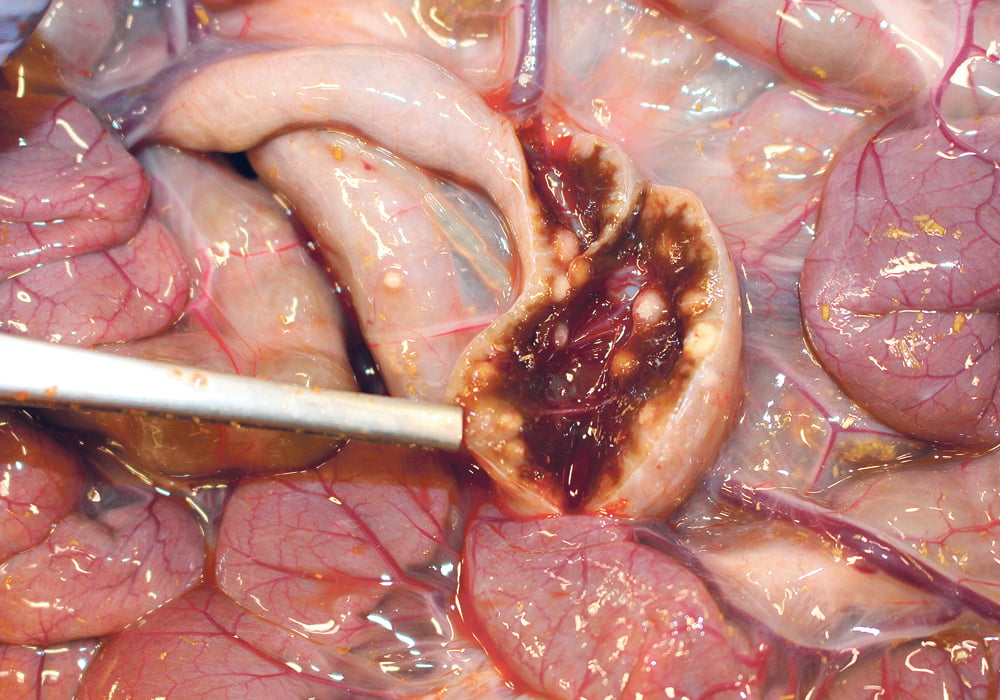One of the most important infectious diseases of sheep and goats is caseous lymphadenitis (also called cheesy gland), a disease caused by the bacterium Corynebacterium pseudotuberculosis.
As far as bacteria go, it is a tough, nasty pathogen. Infected individuals are not able to clear the bacteria from their system, leading to chronic infections. The bacteria spread in the blood from breaks in the skin or mucous membranes (nasal cavity, eyes, mouth) to other areas, eventually setting up abscesses in the lymph nodes (also called lymph glands).
These sinister bacteria use immune cells like trojan horses. Instead of dying when the immune cells attack and eat them, these bacteria use white blood cells as little incubators, growing within them and then bursting out to infect new ones. As the immune cells die, the bacteria spread outward and the destroyed immune cells pile up.
Read Also

Beef check-off collection system aligns across the country
A single and aligned check-off collection system based on where producers live makes the system equal said Chad Ross, Saskatchewan Cattle Association chair.
This repeating cycle creates a characteristic abscess with multiple layers like an onion. These can grow to be several inches in diameter and can also rupture and drain through the skin. The onion-like abscesses also make it very difficult for treatment because antibiotics are unable to penetrate the various layers and kill the pathogen.
The typical sign of this disease is swollen lymph nodes, which can appear as swellings or lumps under the skin at the base of the ear, above the udder, in the flank and in front of the shoulder. These abscesses take months to form after infection. Chronic poor-doing and weight loss are common and are especially frequent in animals with internal infections. In these individuals, the bacteria may also spread to the lungs, leading to pneumonia. The diagnosis is based on finding swollen lymph nodes combined with identifying the bacteria with culture.
Culling of animals with the disease is an approach that will reduce the risk of spread. If culling isn’t an option, animals with draining sores should be isolated and managed by lancing abscesses and administering antibiotics. But these animals will not be cured and the disease will usually reoccur.
It is a challenging disease to control since the bacteria survive easily in the environment for months. There is a sheep vaccine available in Canada but control of this disease requires other activities. Animals become infected most often through skin defects and often routine livestock practices create the opportunity for infection. Shearing, castration, ear tags and tail docking can all open the skin to allow the bacteria to enter the body. Isolation of infected individuals and disinfection of areas that are contaminated with draining pus material is important to control the spread. Equipment such as feeding troughs and milking stations can also harbour the bacteria and spread it through a herd.
The bacteria are present in sheep and goats worldwide.
A Quebec study found more than 24 percent of goats had caseous lymphadenitis and most animals had internal infections. This disease is a major cause of economic loss for producers. Losses included carcasses condemnation or trimming at slaughter. Infected individuals may have reduced milk production, die or be culled resulting in further losses.
Humans can be infected by these bacteria, where it causes similar lymph node infections. People who contact infected sheep and goats are at the greatest risk.
Precautions against infection include wearing gloves and protective clothing, as well as good hand cleaning after working with draining abscesses on animals.
Other animals are also susceptible to infection, including horses, cattle, pigs and birds.
Caseous lymphadenitis is a difficult disease to manage and challenging to treat and creates major economic impacts. Controlling it in herds requires careful attention to biosecurity and selection of replacement stock. Working with veterinarians to develop a management plan is also important.

















